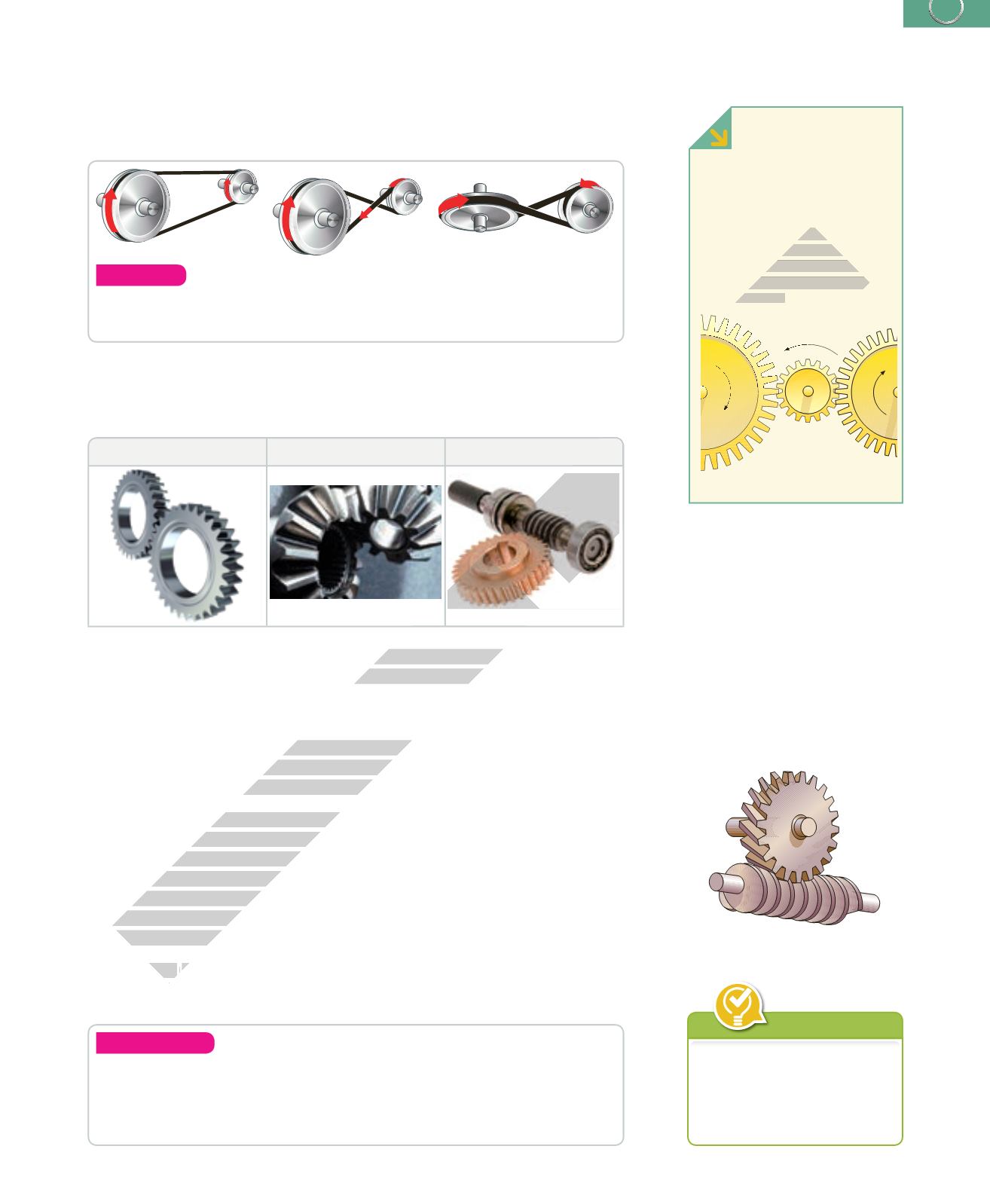
111
5. Mechanisms
www
❚
Rotary transmission
mechanisms include friction
wheels, pulleys with belts,
interlocking gears, and
sprockets with chains.
Key concept
3.4.
Changes in direction and rotation
We can use various systems to change the direction of rotation or the axis of
rotation in a belt drive. We can also vary the distance between the wheels.
Worm drive
Understand
20.
Study the picture on the right. The shaft has got three grooves and the gear
has got 27 teeth. For each rotation of the shaft, how many teeth does the
gear move? If the gear rotates completely, how many times does the shaft
turn?
In some gear mechanisms, several cogs or teeth interlock at the same time. These
mechanisms are more precise18 and they transmit more rotary force, or torque.
3.5.
Worm drive
A worm drive reduces the speed of a rotary system very effectively. A worm drive has
two parts: a worm shaft and a worm gear. The shaft has two, three or even more
grooves. Each groove interlocks with one tooth of the worm gear.
When the worm shaft makes one rotation, the worm gear moves forward one tooth
for every groove on the shaft. Consider the following example, a worm shaft has got
two grooves. They interlock with two teeth of a worm gear. The worm gear has got a
total of 30 teeth. If the screwmakes one rotation, the gear moves forward two teeth.
If the screw makes 15 rotations, the gear moves forward 30 teeth, or one rotation.
Worm drives are usually non-reversible. The shaft can move the gear, but the gear
cannot move the shaft. In this way, the shaft acts as a brake.
Applications
:
we use worm drives for tuning the strings of a guitar, for elevator
mechanisms and for speed reducing systems.
Analyse
18.
Study the pictures above. Which pairs of wheels turn in the same
direction?
IDLER GEAR
In a simple two-gear system,
the gears turn in opposite
directions. If we want the gears
to turn in the same direction,
we put an
idler gear
between
them. This gear changes the
direction of rotation, but it
doesn’t change the ratio of
transmission.
Idler gear
With belts, we can change the direction of rotation and the axis of rotation quite
easily. However, gear drives require special parts to make these changes. We use
different types of gears when two axes are parallel, perpendicular or crossed.
Parallel axes
Perpendicular axes
Crossed axes
18
precise
:
exact and accurate
ADVANCE
EDITION


